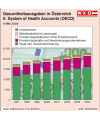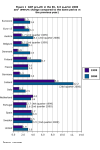Last time, we took a look at six of Howard Wainer’s golden rules to ruin data. To double your pleasure, we decided to explore six more:
- Emphasize the trivial (ignore the important). If you want to explain how salaries have changed over time based on education and gender, segregate this information into two separate charts for women and men.
- Label (a) illegibly, (b) incompletely, (c) incorrectly, and (d) ambiguously. The true connoisseur uses the same abbreviations for different words within a series of charts.
- If it has been done well in the past, think of another way to do it. Many of today’s effective visualization methods have been around for centuries. Fortunately, modern data analysis software offers a lot of fancy options, so you can easily digress from what is tried and true.
Source: How to Display Data Badly, Howard Wainer, The American Statistician, Vol. 38, No. 2 (May, 1984), pp. 137-147



